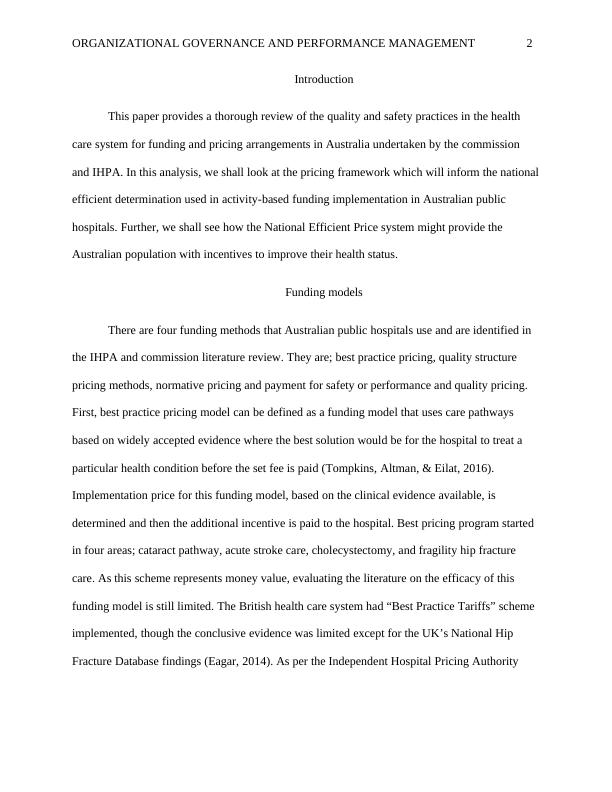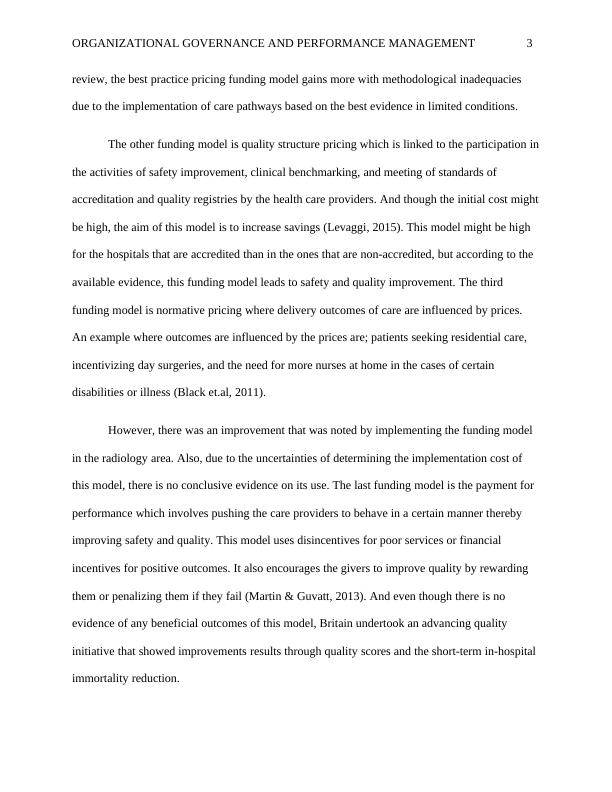Organizational Governance and Performance Management
Identify the funding models used by public hospitals in Australia and evaluate the extent to which the National Efficient price incentivizes improving the health status of selected segments of the population.
6 Pages1448 Words410 Views
Added on 2023-06-04
About This Document
This paper provides a thorough review of the quality and safety practices in the health care system for funding and pricing arrangements in Australia undertaken by the commission and IHPA. It discusses the funding models used by Australian public hospitals, including best practice pricing, quality structure pricing, normative pricing, and payment for performance. The paper also examines the National Efficient Price system and its limitations in providing incentives to improve the health status of the Australian population.
Organizational Governance and Performance Management
Identify the funding models used by public hospitals in Australia and evaluate the extent to which the National Efficient price incentivizes improving the health status of selected segments of the population.
Added on 2023-06-04
ShareRelated Documents
End of preview
Want to access all the pages? Upload your documents or become a member.
Organisational Governance and Performance Management Assignment
|6
|1376
|47
Funding Healthcare System in Australia
|8
|2078
|177
The Australian Healthcare Funding Models
|7
|1604
|110
Healthcare Funding Models Question Answer 2022
|7
|1556
|26
Operational Health Information Exchanges Show Substantial Growth PDF
|6
|1470
|31
Health Care Funding System in Australia
|4
|1068
|409



